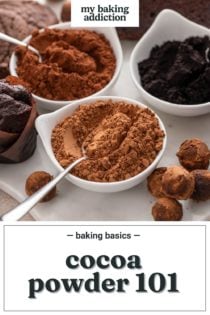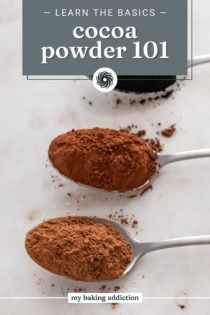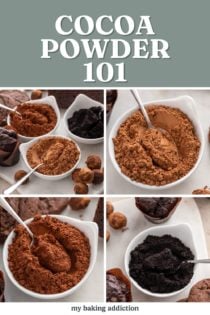This post may contain affiliate links. Please read our privacy policy.
Have you ever wondered the difference between the types of cocoa powder? Find out the difference between natural, dutch-process, and black cocoa and how to know which one to use in your recipe.
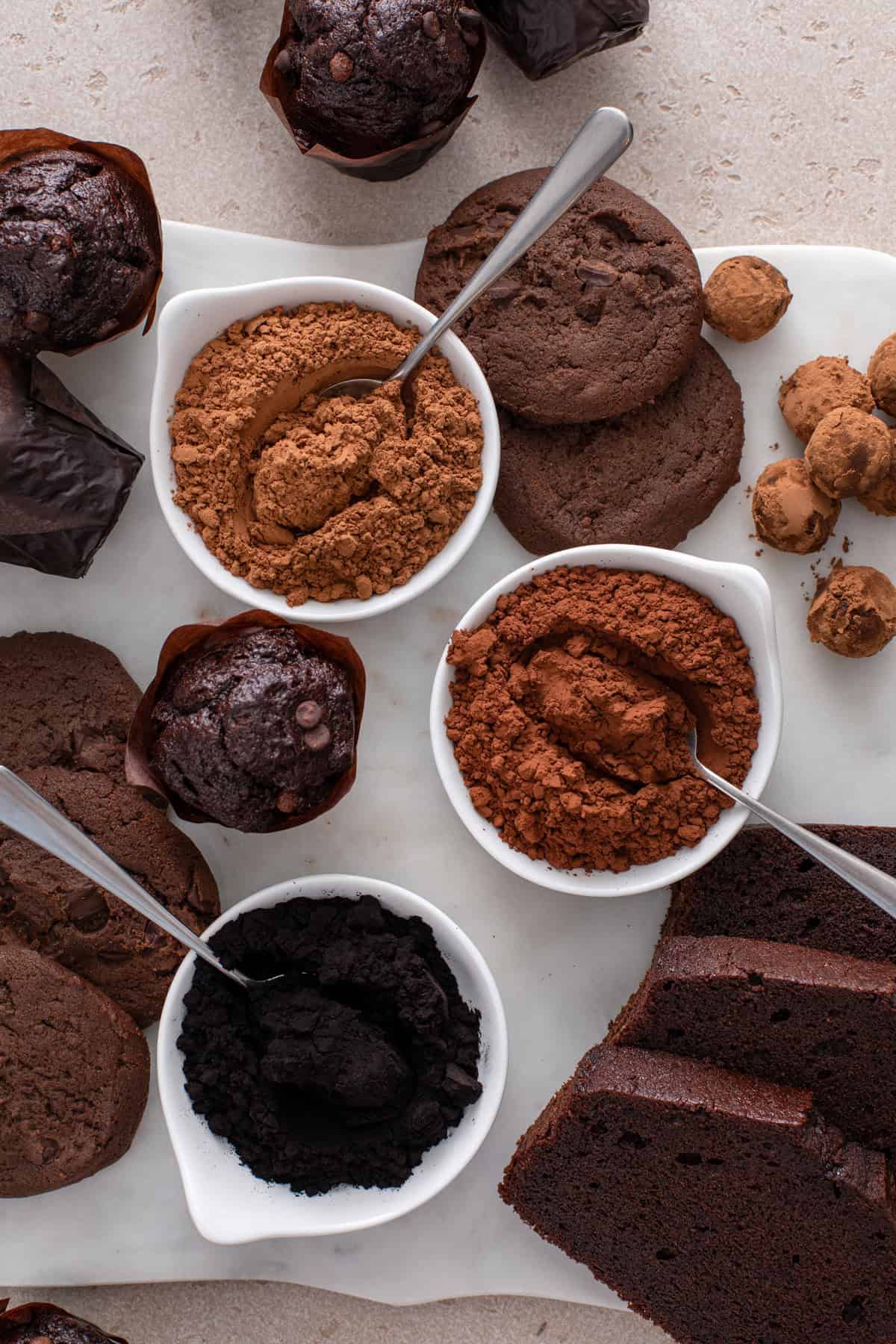
I’ve been baking for a long time. I grew up watching my nana make her famous pumpkin rolls and easy cheesecake and loved helping my mom in the kitchen.
But I know that not everyone learned to cook and bake as a kid. So a lot of us are trying to learn as much as we can as adults.
If that’s you, there’s zero shame in not knowing how to make a quick buttermilk substitute or needing someone to teach you how to measure flour or how to cream butter and sugar correctly.
Cocoa powder is one of those baking ingredients that sounds really basic, but then you get to the grocery store baking aisle and see multiple types. How do you know which kind to buy? What is natural cocoa powder and how is it different from dutched cocoa?
Before you panic, keep reading. I’m going to teach you about the types of cocoa powder, how to know which one to use, and a few tips on how to store them and know if and when they go bad.
The two main types of cocoa powder
There are two primary types of cocoa powder that are most popular in recipes and are easiest to find in grocery stores.
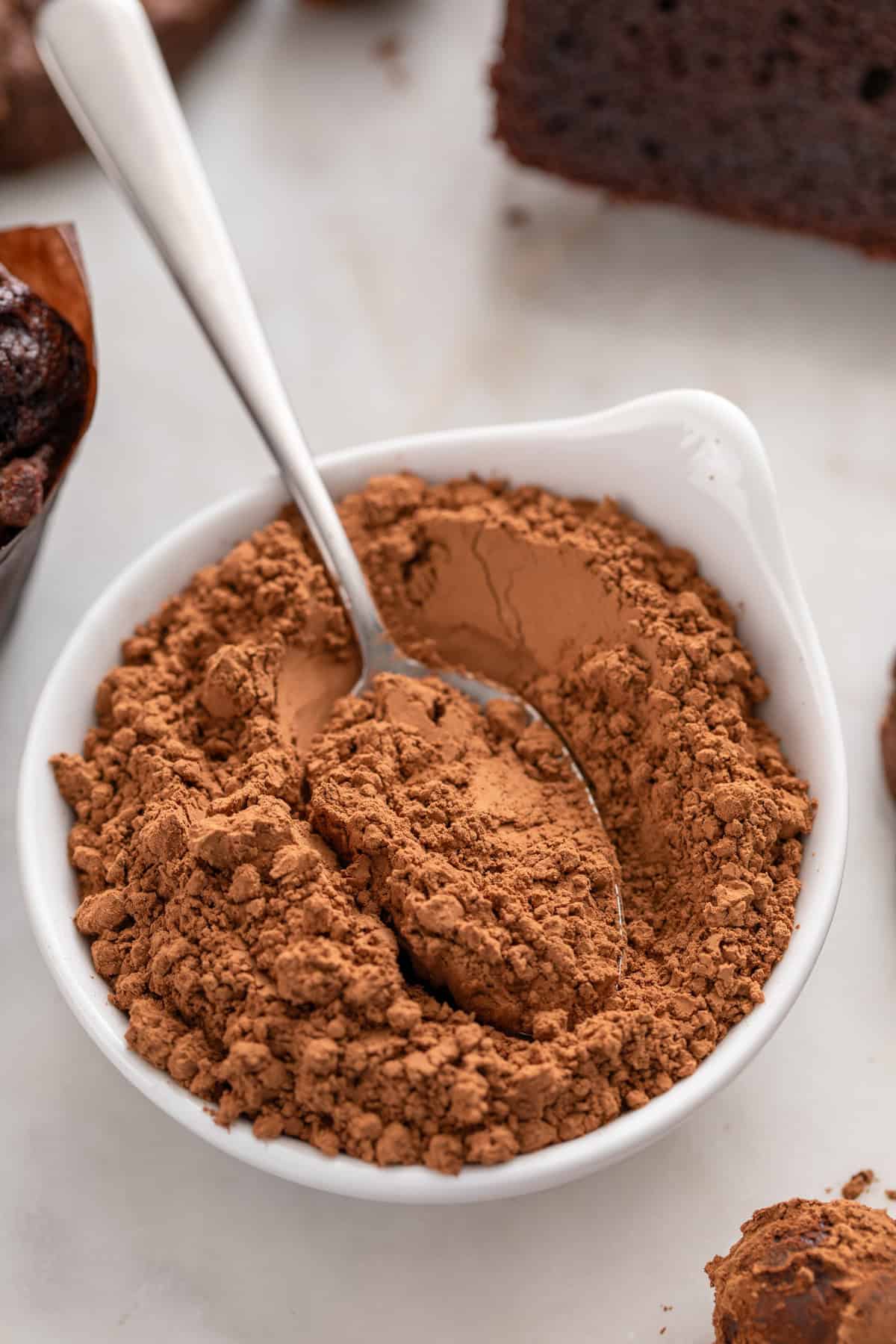
Natural cocoa powder (aka unsweetened or pure cocoa powder)
Unsweetened or natural cocoa is what most of us grew up with. It’s probably what we saw our moms and grandmothers use.
Natural cocoa is unsweetened chocolate with most of the cocoa butter removed and ground into powdered form.
Because it is just unsweetened chocolate ground into a powder, natural cocoa has the same acidity of the cocoa beans, which are surprisingly acidic! And if you’re buying a really good-quality natural cocoa, it will also have complex aromas and flavor notes of the beans.
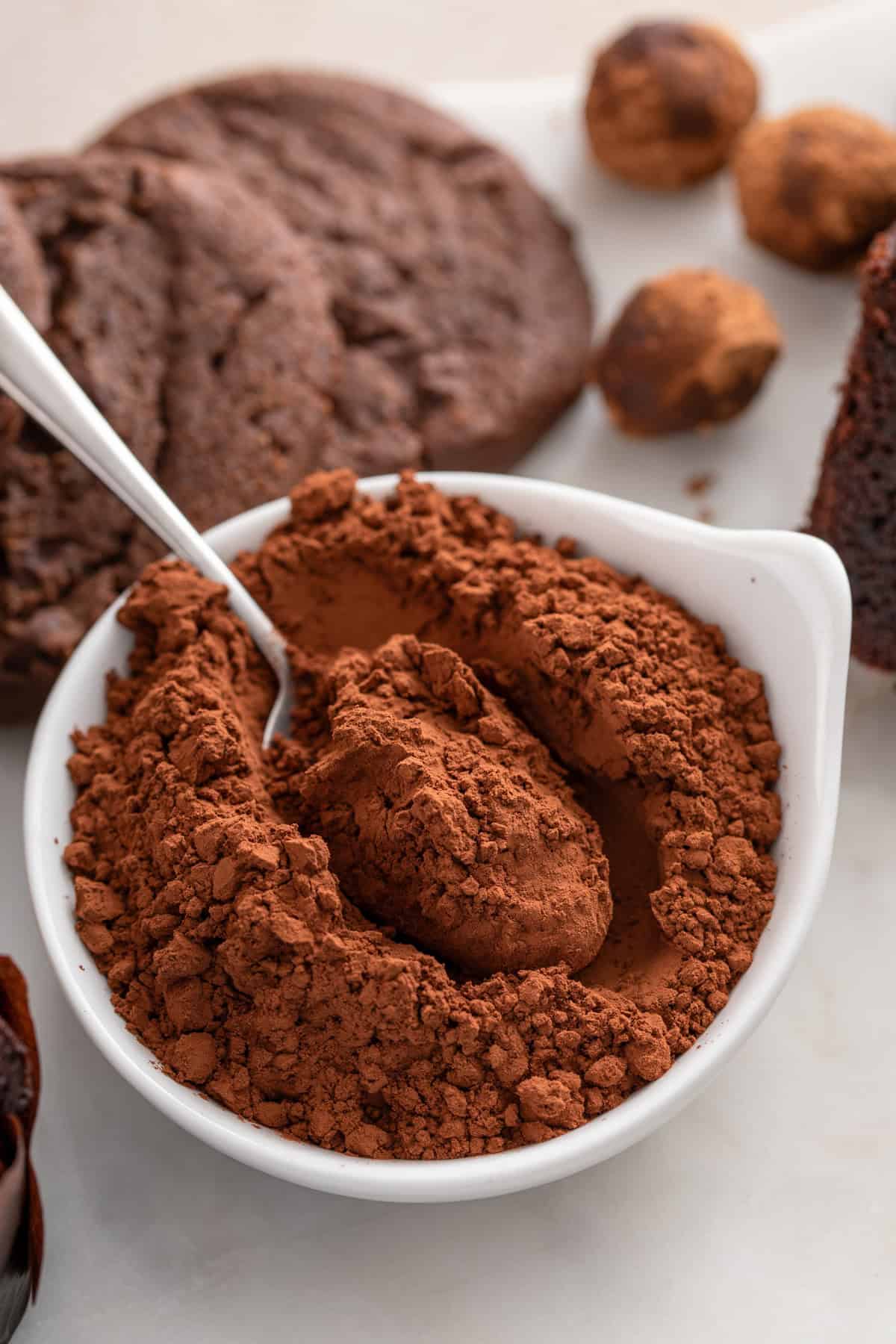
Dutched cocoa (aka dutch-process, European-style, or alkalized cocoa powder)
Dutch-process cocoa is made from cocoa beans that have been alkalized before being turned into cocoa powder. Alkalizing means the beans are treated with potassium carbonate to make them less acidic (or more alkaline).
This process also creates a different flavor and color. Dutched cocoa has a more mellow flavor and darker color than natural cocoa.
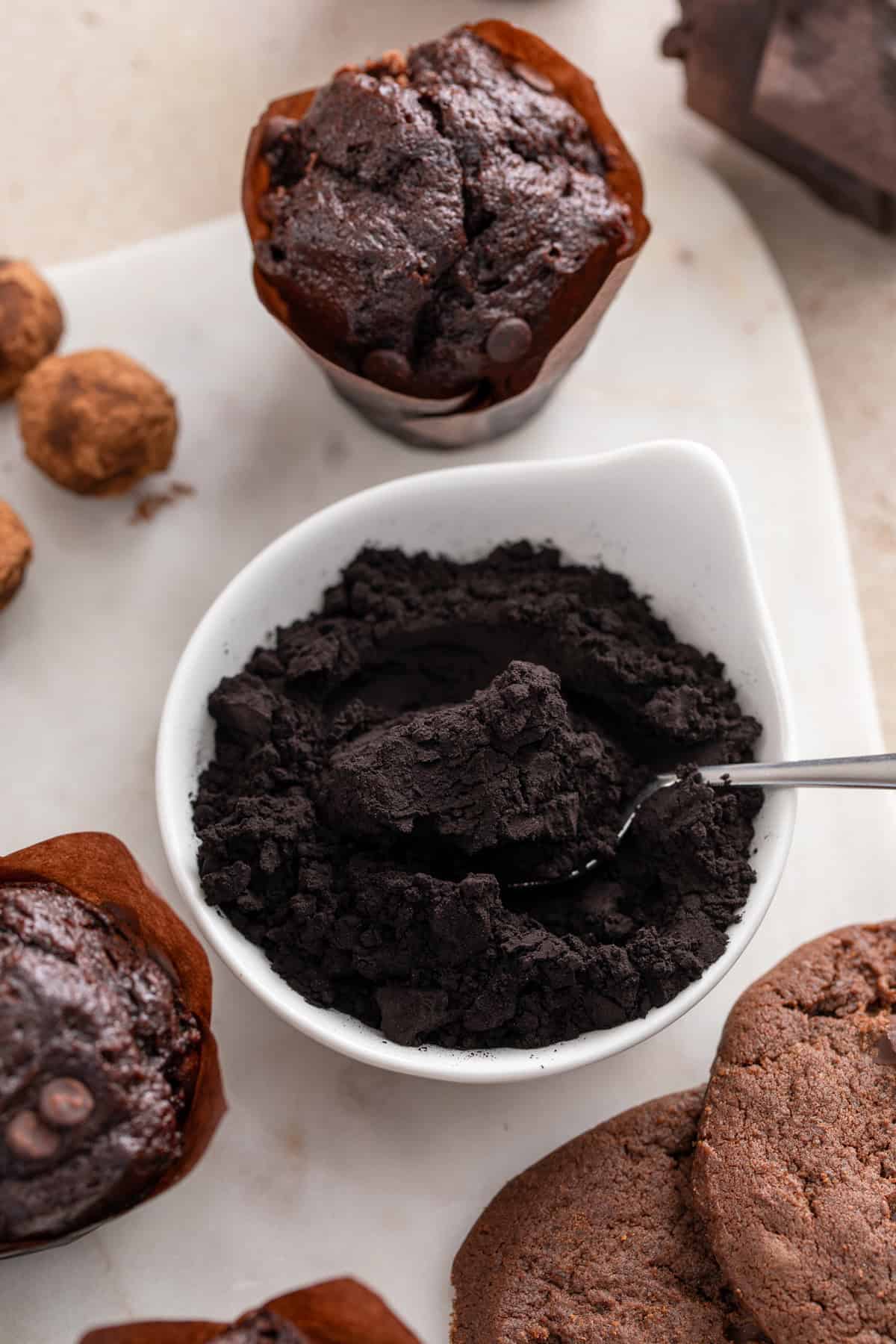
What about black cocoa powder?
If you spend a lot of time in the baking aisle, you might have also seen black cocoa. It is also sometimes called ultra-Dutch-processed cocoa.
Black cocoa is also alkalized. But the process is a bit different and done later to create a cocoa powder that is very, very dark in color and with a much smoother, less bitter taste.
A lot of chocolate lovers think that black cocoa tastes less like chocolate than natural or dutched cocoa, although it’s the key ingredient in Oreo cookies!
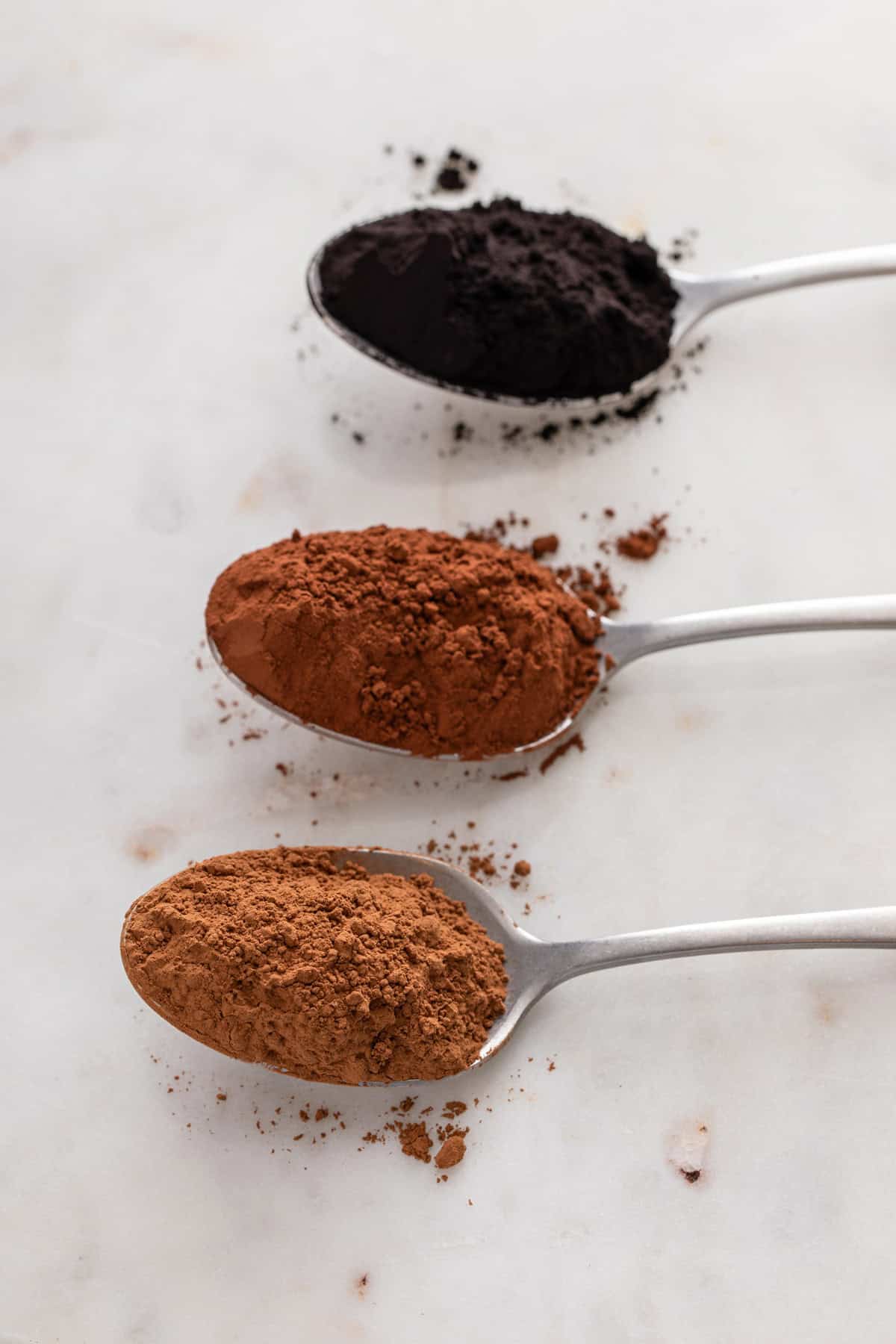
Pin this now to find it later
Pin ItWhy use cocoa powder instead of chocolate in a recipe?
Don’t be fooled into thinking that cocoa powder is not as flavorful as chocolate or not as good as chocolate in baked goods. It’s actually even better for a lot of recipes!
Because most of the fat (cocoa butter) has been removed, it does not weigh baked goods down in the same way that melted chocolate will.
For example, while melted chocolate is perfect in fudgy, dense recipes like snickers brownies, it cannot create the light texture and delicate crumb that we want in our chocolate cake recipes.
You can also use cocoa powder to make light, airy chocolate frosting. Chocolate is better for toppings like chocolate ganache.
Beginner bakers can also find cocoa powder easier to use, since you don’t have to worry about melting it.
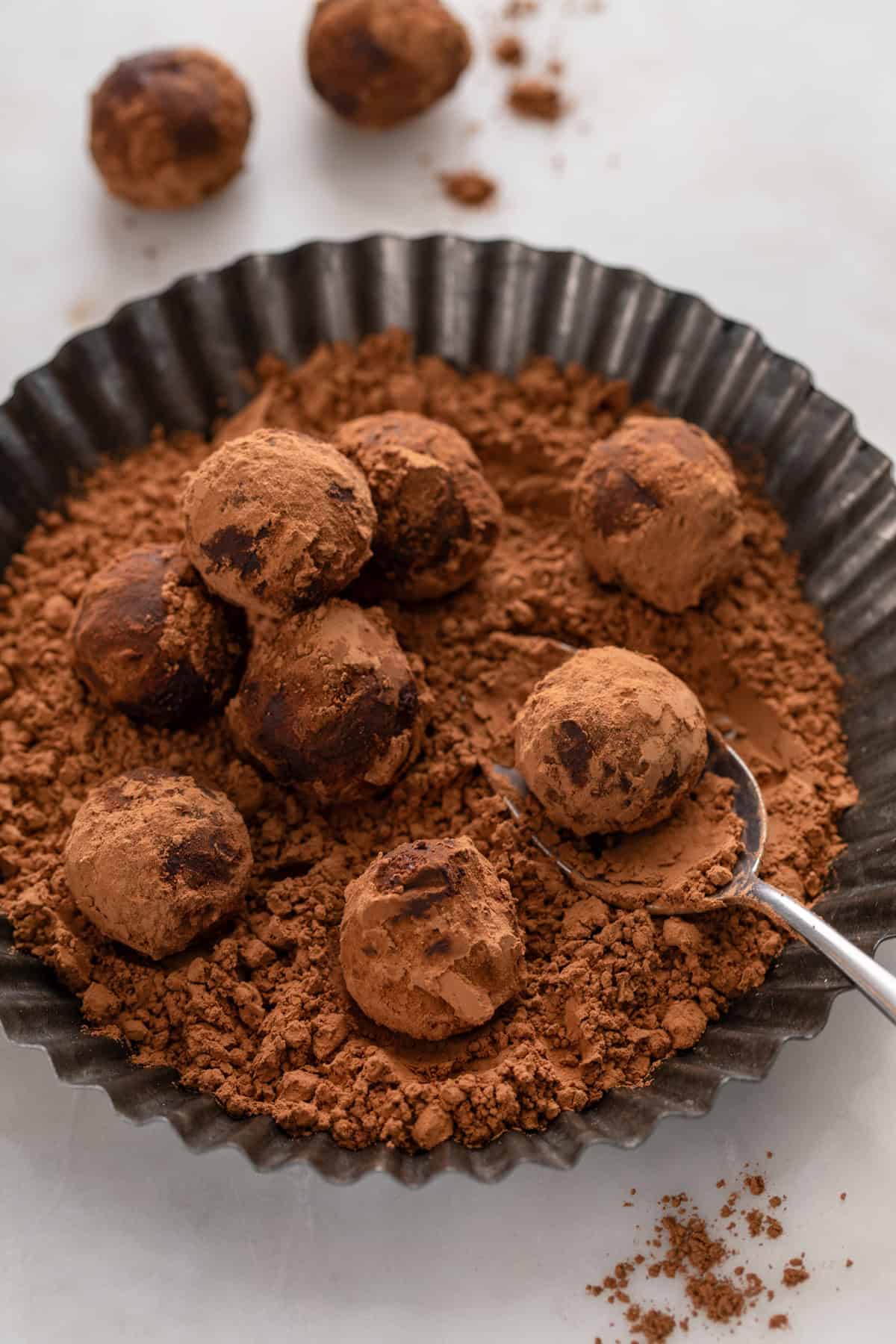
How do you know which one to use?
Because the main difference between the types of cocoa powder is the acidity, one of the main things that determines which cocoa powder you should use in a recipe is whether the recipe calls for baking powder or baking soda.
If a recipe is leavened primarily with baking soda, use natural cocoa powder.
Recipes like my Texas sheet cake, eggless chocolate cake, and peppermint mocha cookies call for only baking soda, so they require natural (unsweetened) cocoa powder.
My chocolate strawberry cake and the best chocolate cake use a combination of baking soda and baking powder. But because there is more baking soda than baking powder in the recipe, the cake is made primarily with natural cocoa, with the option to add a bit of dutched cocoa if you like.
If a recipe is leavened primarily with baking powder, use dutch-process cocoa powder.
My chocolate stout cake uses only baking powder, so it also uses dutch-process cocoa powder.
These are general guidelines, so you sometimes will see recipes that don’t follow these exact rules. For example, my chocolate bread uses unsweetened cocoa and baking powder, but it still turns out great.
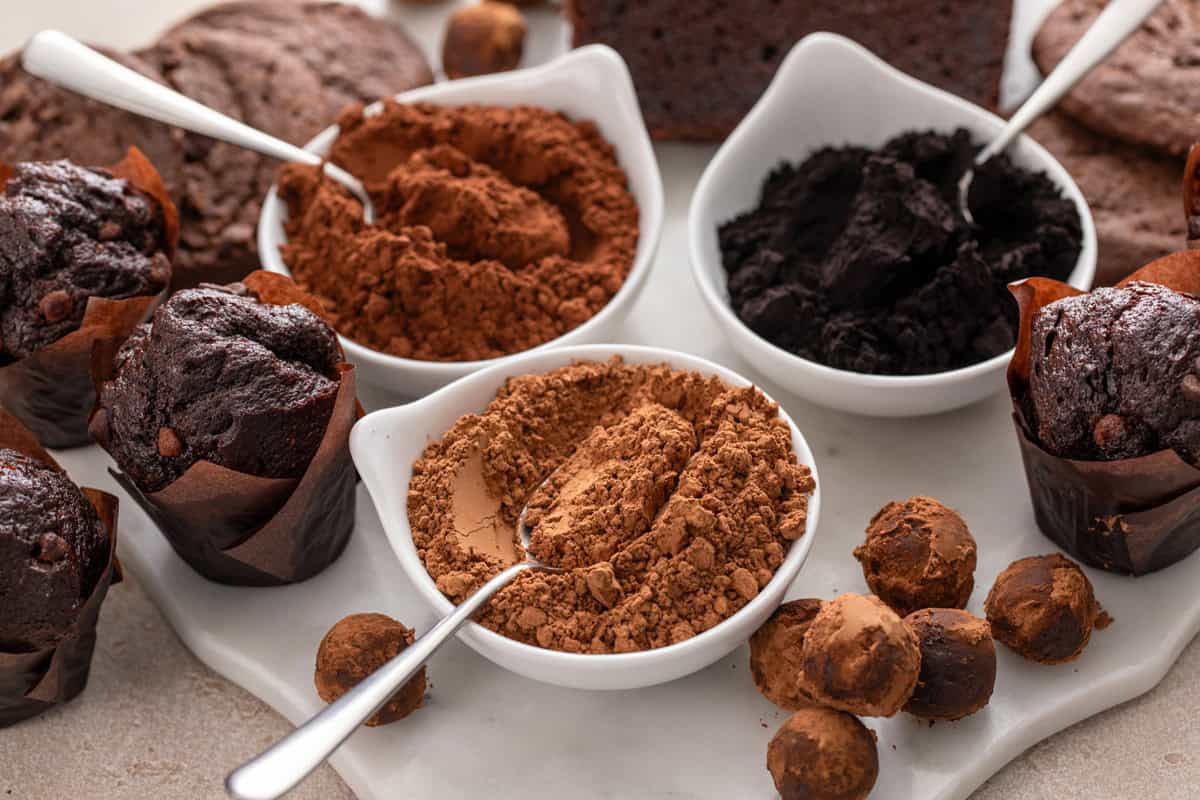
FAQs
If the recipe does not call for any baking soda OR baking powder, you can use any cocoa powder you like best in the recipe.
When you buy a container of cocoa powder, you might notice that it has a “best by” date on it, rather than a true expiration date. That’s because, as long as it does not have mold or a funky smell to it, cocoa powder never really goes bad.
Instead, it will lose its potent flavor over time. You can use a cocoa powder that is a couple years past its “best by” date, but it may not have the same strong flavor as one that you bought last week.
Keep your cocoa powder in an airtight container in a cool, dry place away from moisture.
It’s fine to keep it in the kitchen pantry in the tub it is sold in. But you might want to transfer it to a more airtight container if you live in a really humid environment.
Help it last longer by only scooping it out of the container with a clean, dry spoon or measuring cup.
